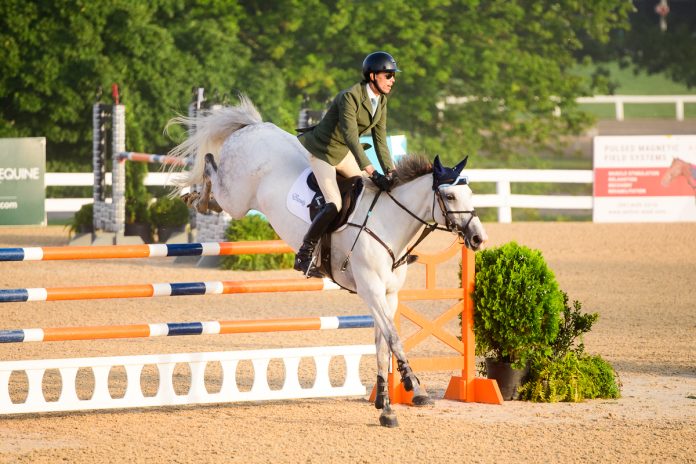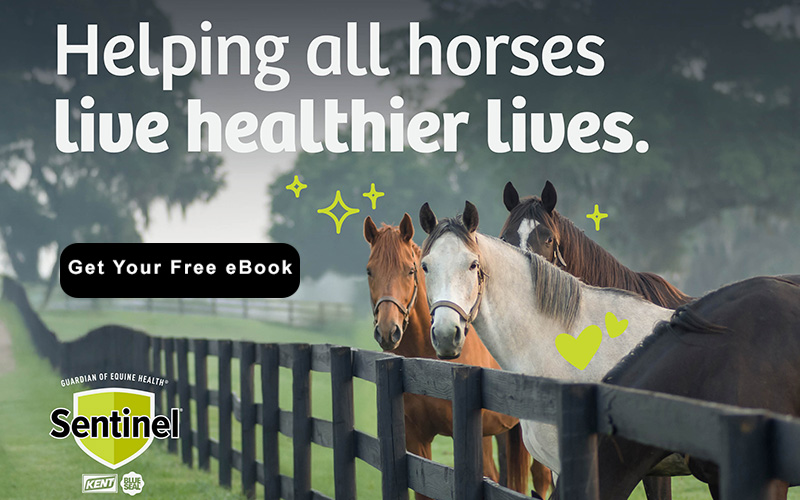
Brought to you by With Purpose: The Balmoral Standard
When most riders picture a gymnastic line, they think of building height as they go. Start small, get the horse organized, and finish with the biggest effort. At Balmoral, however, Carleton and Traci Brooks often flip this expectation. Instead of finishing on a high oxer, they sometimes end with the smallest jump in the line. Why? Because not every horse benefits from ending on a higher jump.
Rethinking the Traditional Gymnastic
Traditional gymnastics are designed to build confidence, strength, and technique. A classic line might begin with a crossrail, then an oxer, then a vertical that gradually gets taller. By the end, the horse is meant to feel successful at a greater height and effort.
But what about the horse that builds too much? The hot one who gets quick through the line, or the green horse who begins to worry? For these horses, finishing big can create anxiety instead of confidence. That’s where descending gymnastics, ending with the lowest fence, come in.
Who Benefits Most
Descending gymnastics are particularly useful for:
- Hot Horses: The kind that rush down lines, throwing their rider onto the defensive.
- Young Horses: Those still learning the ropes, who need to end on a calm, positive note.
- Tense Horses: The ones who start anticipating, bouncing through the line with more adrenaline than rhythm.
- By finishing with a small fence, these horses settle down, take a breath, and learn that not every line ends with maximum effort.
Building the Line
A typical descending gymnastic might start with a crossrail, build to a small vertical or oxer in the middle, and then drop back down to a crossrail at the end. The line still serves its purpose, teaching straightness, encouraging bascule, and keeping the rider focused, but the finish is soft.
This kind of exercise tells the horse: you don’t need to escalate every time. It conditions them to stay rideable and quiet, rather than anticipating a big finish.
What Riders Learn
Descending gymnastics aren’t just for the horse’s benefit. They also teach riders valuable lessons:
- Resist the Urge to Chase: Riders often push harder as jumps get bigger. Ending small reinforces patience.
- Ride the Rhythm, Not the Height: With the last fence tiny, the focus shifts to pace and track instead of “surviving” the finish.
- Learn to Relax, Too: Just as the horse takes a breath at the end, the rider practices letting go of tension.
Avoiding the Trap of Bigger = Better
It’s easy to assume progress means raising fences higher and higher. But Balmoral’s philosophy reminds us that not all horses, or riders, thrive under that model. Sometimes, progress looks like stepping down, using thoughtful exercises to teach relaxation instead of escalation.
In the Show Ring
A horse that’s trained with descending gymnastics often shows a noticeable difference in the ring. Instead of charging the last element of a combination, they stay soft through the finish. Instead of expecting every question to get harder, they stay open to listening. That difference can be the margin between a rushed, tense round and a polished, winning trip.
Not every gymnastic needs to build to a grand finale. By finishing small, riders can teach their horses to stay calm, confident, and consistent. And in the long run, that foundation of rideability will carry far more value than one big jump at the end of a line.
Want to take your riding and horsemanship to the next level? With Purpose: The Balmoral Standard distills decades of wisdom from Carleton and Traci Brooks into practical, thoughtful lessons you can apply every day at home, in the schooling ring, and in the show ring. From training philosophies to mental game strategies, the book offers riders of every level a blueprint for success built on empathy, structure, and purpose.
With Purpose: The Balmoral Standard is available on Kindle and Audible.
This article originally appeared in The Plaid Horse Magazine and is published here with permission.
There are more informative articles in our section on Health & Education.

































